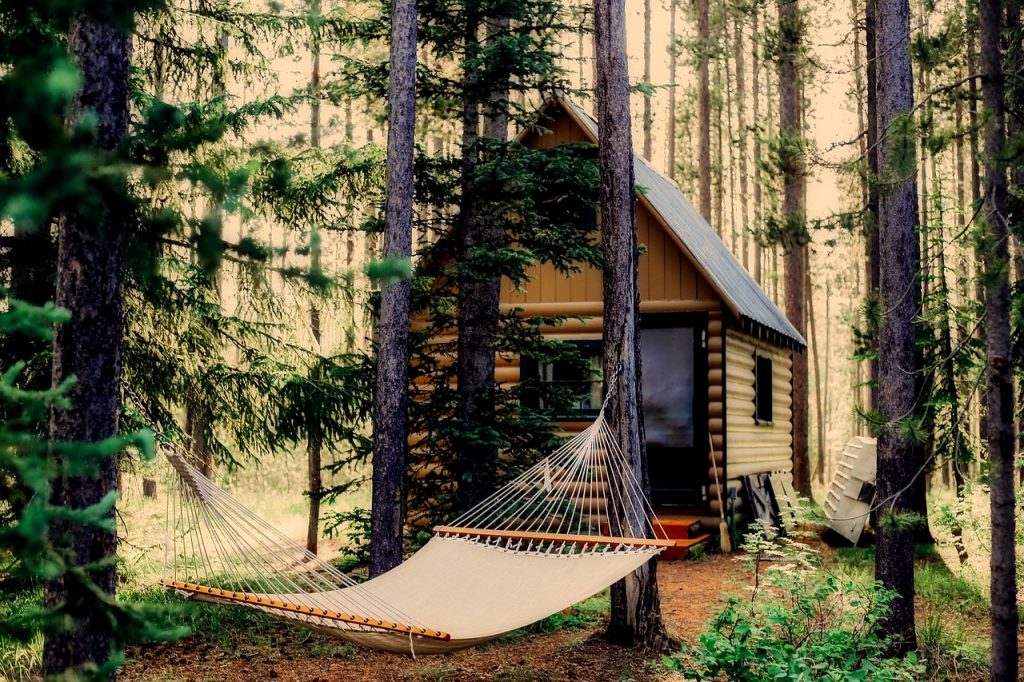The first rule of treehouse building is that it all kind of depends on the tree. You can model yours on this one, or on your neighbor’s, or on one you saw on Treehouse Masters, but the tree (or trees) in your yard will be different—thicker, farther apart, closer together, stronger, weaker—so your design will change accordingly. Pour en savoir plus, lisez cet article.
The second rule is, the kids should be involved. The building of a treehouse was an important selling point when we told our boys we were moving out of the big, exciting city to a sleepy rural town. I still have our older son’s hand-drawn plans for what he wanted it to look like. (It’s close.) And they both drove some nails and screws and found some cool branches that we incorporated into the design. They participated.
The last rule is, it’s not gonna end up the way you think it’s gonna end up. Meaning: The plan will change as you go. New ideas will form once you’re up in that tree. And other ideas will prove undoable. Branches will get in the way, and things will generally look different from the air. Even a few feet up. So improvise. Adapt. Make it yours.
This treehouse is a great build because it requires a minimal number of nails or screws to be driven into the trees (six total, to be exact), various sizes and shapes of tree branches scavenged from the wild helps liven up the finished design, and using a double-trunk tree to support the treehouse adds much needed strength and stability.
Suspend the Floor Joists
I chose a tree with two trunks and measured 10 feet up from the ground on each trunk. For the floor joists, I used three pressure-treated 2 x 12 boards and fanned them out from the 10-foot mark on each trunk: one joist on the outside edges of the trees, and one threaded through the V in the middle.
I supported the outer ends of the joists with vertical pressure-treated 4 x 4 posts and clamps to hold them steady. Next, then I drilled 5/16-inch-diameter holes through the joists and ran ¼-inch-diameter x 3-foot-long galvanized-steel threaded rods through all three joists (pictured above)—but not through the tree trunks. I secured the 2 x 12s snugly to the trunks by adding nuts and washers to the ends of the rods and tightening them with a wrench. So, at this point, the three big floor joists were splayed out into the air. The joists were tightly secured to the trunks at one end by the threaded rods, and propped up on the other by vertical
4 x 4s.
Fasten the Base and Build the Floor
The 4 x 4 posts on the outer ends of the joists became permanent supports, strengthened by diagonal pressure-treated 2 x 4 struts. Using a cordless impact driver, I screwed the joists to the upper ends of the 4 x 4s with an exterior-grade fastener: GRK 3 1/8-inch structural screws. (Pre-boring the joists with screw-shank clearance holes makes the screws go in a whole lot easier.) Then I used 3-inch-long galvanized decking screws to attach the 2 x 4 struts to the posts, as pictured (left, center). The struts add rigidity to the frame and help prevent swaying and wobbling.
Once the joists and posts are secured, install the treehouse floor by screwing 2x pressure-treated lumber across the joists. I used alternating 2 x 4s and 2 x 6s to create an interesting look. Fasten each floorboard with 3-inch decking screws (right).
Add Railings
I left the ends of the floorboards staggered (as opposed to trimming them flush with one another), so the upward struts of my railings are staggered, too. I simply measured 2 x 4s to the same length and fastened them to the ends of each floorboard, using more structural screws, then added a flat railing along the top all the way around. For variety, the kids found some interesting branches around the yard, and we substituted those for some of the struts (pictured above).
I improvised as I went: If a corner didn’t seem strong enough, I added enough support to make it strong. Where the railings meet the trees, I attached a wood block, using as few fasteners as possible, to act as a base for the railing to affix to—a starting point, or ending point, for the railing.











